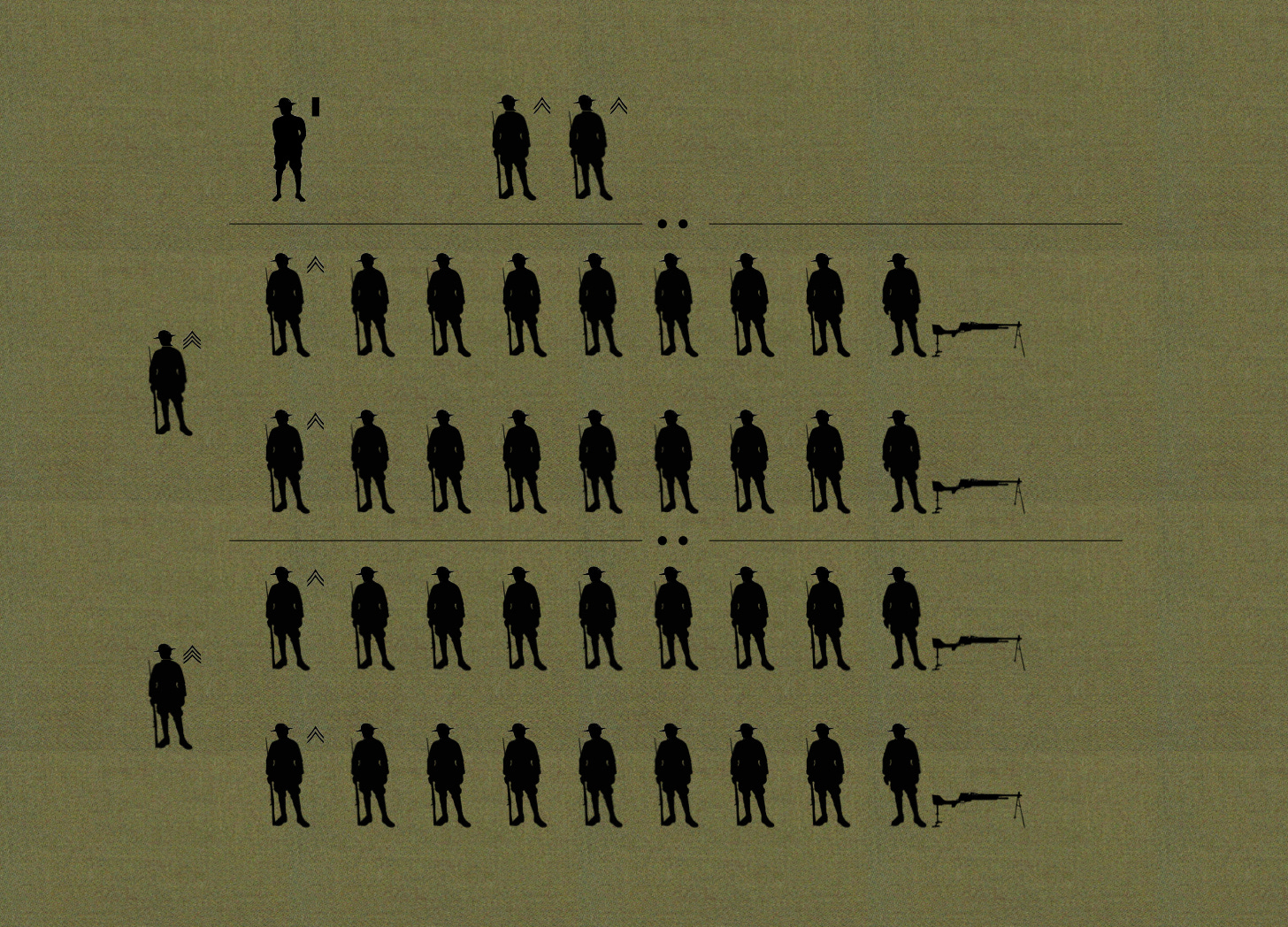The Automatic Rifles of the 8th Marines
While serving in Texas between 1917 and 1919
The 8th Marine Regiment spent the last year of the First World War in Texas.1 Like other Marine infantry outfits that remained in the Western Hemisphere, it was authorized but a fraction of the officers and men rated by units that served with the American Expeditionary Forces. As a result, rather than consisting of more than fifty-six platoons, each of its component companies possessed but twenty-three such elements.2
Of the twenty combatant platoons allowed the 8th Marines, eighteen were rifle platoons. Armed entirely with bolt-action rifles, each of these seems to have consisted of five eight-man squads. The two remaining platoons belonged to the “automatic rifle company,” a new type of unit built around eight Benét-Mercié “automatic machine rifles.”3
While I have yet to find any information about the internal structure of the automatic rifle company, I am reasonably sure that it consisted of two platoons, each of which was armed with four automatic rifles. After all, if there had been three platoons, military minds of the time would have recoiled in horror at the asymmetric distribution of the eight definitive weapons of the unit.
Likewise, the presence of three lieutenants in the company, one of whom is identified as the “reconnaissance officer,” suggests the division of the unit into two platoons. Similarly, the number and designations of non-commissioned officers suggests that the headquarters platoon rated two sergeants, a corporal trained to operate an optical range-finder, and a corporal trained as a signaler.
This sort of arithmetic, however, cannot provide as firm an answer to the question of the internal organization of each of the two platoons. In particular, I am not sure of the number of privates in each of the four squads of the platoon. The most likely allocation would provide each squad with a corporal and eight privates. However, it is also possible that each squad rated seven, six, or five privates. (It is interesting to note that two automatic rifle squads of at least one Marine Corps rifle company serving in the Western Hemisphere in the autumn of 1917 consisted of a corporal and five privates.)4
With these things in mind, I think it is reasonable to assume that each of the automatic rifle platoons of the 8th Marines consisted of a headquarters and four squads, with each squad made up of a corporal, a pointer (who fired the automatic rifle), and anywhere from four to eight additional privates.
The two sergeants in each platoon would probably have served, respectively, as the platoon sergeant and the platoon guide. It is also possible, however, that each led a section composed of two automatic rifle squads.
The organization of platoons in this way would leave the automatic rifle company with three sergeants, two corporals, and eleven privates who were available for other duties. If we subtract the men who fed the company (the mess sergeant and two cooks who ranked as privates), the company clerk (conventionally a corporal), and the sergeant who operated the company range finder, we have a sergeant, a corporal, and nine privates who might have been charged with assisting the reconnaissance officer or, if such quadrupeds became available, manage mules.5
Sources: The chief source for this article is the section of Battalion: An Organizational Study of United States Infantry that deals with the infantry units of the US Army and Marine Corps that served in places other than France during the First World War. The text of this section appeared in The Tactical Notebook in April of 2023. An organizational diagram, taken from the appendix to Battalion, can be found here, at the Military Learning Library.
For Further Reading:
For an account of the time that the 8th Marine spent in Texas, see Annette D. Amerman “Over Here! Marines in Texas during World War I” in Annette D. Amerman, editor United States Marine Corps in the First World War: Anthology, Selected Bibliography, and Anottated Order of Battle (Quantico: Marine Corps University Press, 2016) pages 141 and 142
For the purposes of this comparison, I have presumed that the regimental headquarters company of the 8th Marines was divided into two platoons and counted the 19-man band as a platoon.
The first link will take you to the superlative “Forgotten Weapons” website, the second to an article, from the Infantry Journal of 1913, about the “automatic machine rifle.”
Marion B. Humphrey “Provisional Machine Gun Drill and Notes for Their Tactical Handling, for the 24th Company” Marine Corps Gazette December 1917 pages 277-294
As far as I can tell, the 8th Marines made no use of equines of any sort while serving in Texas. Indeed, as they were held in readiness of landing operations to secure oil fields along the eastern coast of Mexico and such beasts greatly complicated movement from ship to shore, it is likely that the organization of the regiment presumed the absence of horses and mules. That said, it may have been that the establishment for the 8th Marines made provision for “everything but the animals” pack trains that would acquire the necessary horses and mules once the regiment had come ashore.









According to Churchill the real great allied offensive was planned for 1919 (The World Crisis). These fellows could have expected to be part of it.